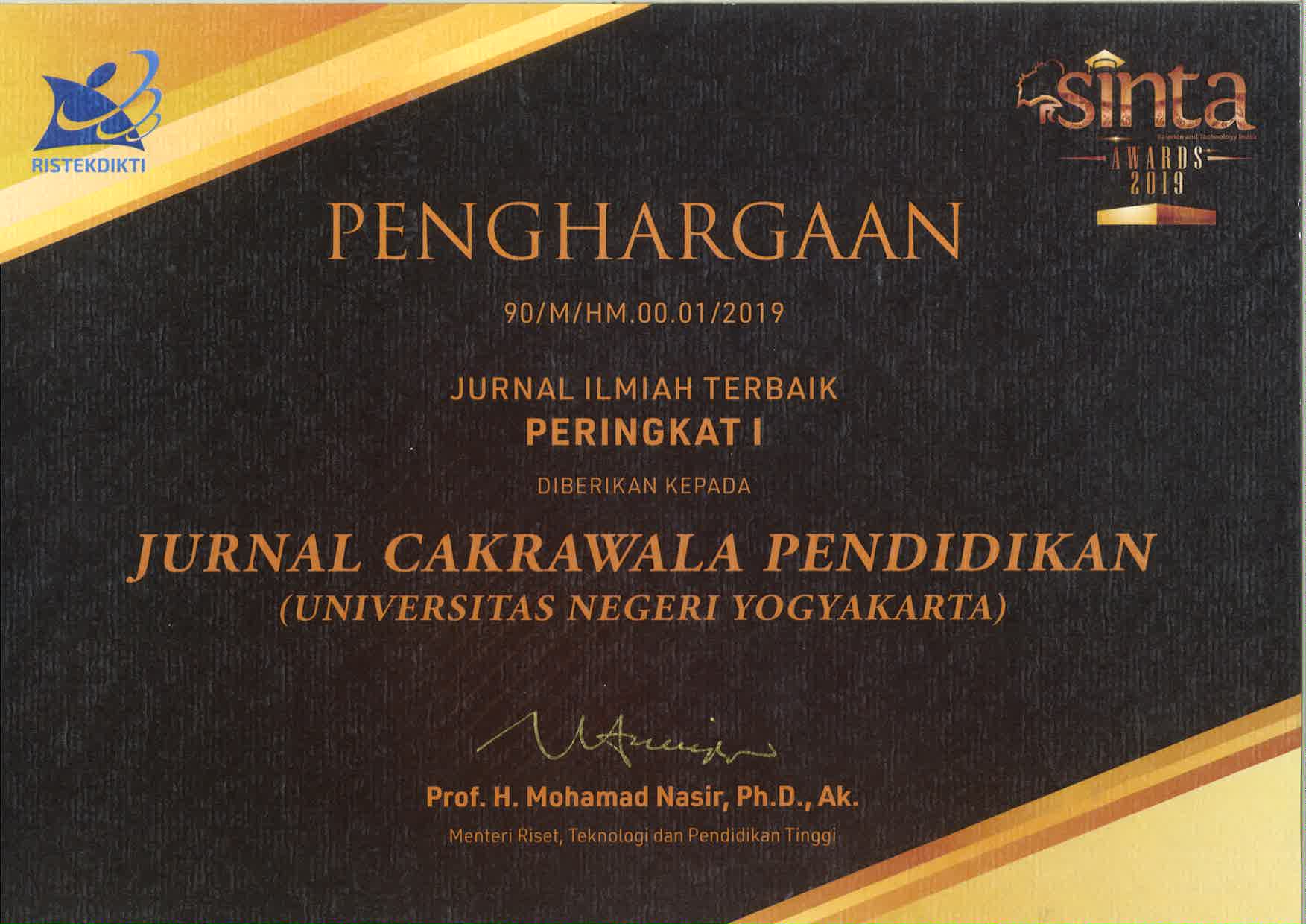Student's creative model in solving mathematics controversial problems
Downloads
Downloads
Baran, Gí¼len, Serap Erdogan, and Aygen í‡akmak. 2011. "A Study on the Relationship between Six-Year-Old Children's Creativity and Mathematical Ability." International Education Studies 4(1):p105. doi: 10.5539/ies.v4n1p105.
Beghetto, Ronald A., and Maciej Karwowski. 2018. "Educational Consequences of Creativity: A Creative Learning Perspective." Creativity. Theories – Research - Applications 5(2):146–54. doi: 10.1515/ctra-2018-0011.
Brownlow, Luke. 2021. "Framing Word Problems: Task Confidence in Early Childhood Pre-Service Teachers." 13(2):18.
Brunkalla, Kai. 2009. "HOW TO INCREASE MATHEMATICAL CREATIVITY- AN EXPERIMENT." The Mathematics Enthusiast 6(1–2):257–66. doi: 10.54870/1551-3440.1148.
Chamberlin, Scott A., and Sidney M. Moon. 2005. "Model-Eliciting Activities as a Tool to Develop and Identify Creatively Gifted Mathematicians." Journal of Secondary Gifted Education 17(1):37–47. doi: 10.4219/jsge-2005-393.
Coxbill, Emmy, Scott A. Chamberlin, and Jennifer Weatherford. 2013. "Using Model-Eliciting Activities As a Tool to Identify and Develop Mathematically Creative Students." Journal for the Education of the Gifted 36(2):176–97. doi: 10.1177/0162353213480433.
Creswell, John W., 2012. Educational Research: Planning, Conducting, and Evaluating Quantitative and Qualitative Research. Pearson Education, Inc. New York.
Dagan, Miriam, Pavel Satianov, and Mina Teicher. 2018. "Creating Use of Different Representations as an Effective Means to Promote Cognitive Interest, Flexibility, Creative Thinking, and Deeper Understanding in the Teaching of Calculus." 10(3):11.
Elgrably, Haim, and Roza Leikin. 2021. "Creativity as a Function of Problem-Solving Expertise: Posing New Problems through Investigations." ZDM – Mathematics Education 53(4):891–904. doi: 10.1007/s11858-021-01228-3.
Joklitschke, Julia, Benjamin Rott, and Maike Schindler. 2021. "Notions of Creativity in Mathematics Education Research: A Systematic Literature Review." International Journal of Science and Mathematics Education. doi: 10.1007/s10763-021-10192-z.
Kattou, Maria, Katerina Kontoyianni, Demetra Pitta-Pantazi, and Constantinos Christou. 2013. "Connecting Mathematical Creativity to Mathematical Ability." ZDM 45(2):167–81. doi: 10.1007/s11858-012-0467-1.
Leikin, Roza, and Haim Elgrably. 2022. "Strategy Creativity and Outcome Creativity When Solving Open Tasks: Focusing on Problem Posing through Investigations." ZDM – Mathematics Education 54(1):35–49. doi: 10.1007/s11858-021-01319-1.
Lin, Chia-Yi, and Seokhee Cho. 2011. "Predicting Creative Problem-Solving in Math From a Dynamic System Model of Creative Problem Solving Ability." Creativity Research Journal 23(3):255–61. doi: 10.1080/10400419.2011.595986.
Mueller, Mary, Dina Yankelewitz, and Carolyn Maher. 2014. "Teachers Promoting Student Mathematical Reasoning." Investigations in Mathematics Learning 7(2):1–20. doi: 10.1080/24727466.2014.11790339.
Nadjafikhah, Mehdi, Narges Yaftian, and Shahrnaz Bakhshalizadeh. 2012. "Mathematical Creativity: Some Definitions and Characteristics." Procedia - Social and Behavioral Sciences 31:285–91. doi: 10.1016/j.sbspro.2011.12.056.
National Council of Teachers of Mathematics, ed. 2000. Principles and Standards for School Mathematics. Reston, VA: National Council of Teachers of Mathematics.
Schindler, Maike, and Achim J. Lilienthal. 2020. "Students' Creative Process in Mathematics: Insights from Eye-Tracking-Stimulated Recall Interview on Students' Work on Multiple Solution Tasks." International Journal of Science and Mathematics Education 18(8):1565–86. doi: 10.1007/s10763-019-10033-0.
Schoevers, Eveline M., Evelyn H. Kroesbergen, Mirjam Moerbeek, and Paul P. M. Leseman. 2022. "The Relation between Creativity and Students' Performance on Different Types of Geometrical Problems in Elementary Education." ZDM – Mathematics Education 54(1):133–47. doi: 10.1007/s11858-021-01315-5.
Sharma, Yogesh. 2014. "The Effects of Strategy and Mathematics Anxiety on Mathematical Creativity of School Students." 13.
Simonneaux, Laurence, and Jean Simonneaux. 2009. "Socio-Scientific Reasoning Influenced by Identities." Cultural Studies of Science Education 4(3):705–11. doi: 10.1007/s11422-008-9145-6.
Sriraman, Bharath. 2009. "The Characteristics of Mathematical Creativity." ZDM 41(1–2):13–27. doi: 10.1007/s11858-008-0114-z.
Sriraman, Bharath, Per Haavold, and Kyeonghwa Lee. 2013. "Mathematical Creativity and Giftedness: A Commentary on and Review of Theory, New Operational Views, and Ways Forward." ZDM 45(2):215–25. doi: 10.1007/s11858-013-0494-6.
Subanji, Subanji, Toto Nusantara, and Desi Rahmatina. 2021. "The Statistical Creative Framework in Descriptive Statistics Activities." International Journal of Instruction 14(2):591–608. doi: 10.29333/iji.2021.14233a.
Å vecová, Valéria, Lucia Rumanová, and Gabriela PavloviÄová. 2014. "Support of Pupil's Creative Thinking in Mathematical Education." Procedia - Social and Behavioral Sciences 116:1715–19. doi: 10.1016/j.sbspro.2014.01.461.
Tabach, Michal, and Alex Friedlander. 2013. "School Mathematics and Creativity at the Elementary and Middle-Grade Levels: How Are They Related?" ZDM 45(2):227–38. doi: 10.1007/s11858-012-0471-5.
Voica, Cristian, and Florence Mihaela Singer. 2012. "Creative Contexts as Ways to Strengthen Mathematics Learning." Procedia - Social and Behavioral Sciences 33:538–42. doi: 10.1016/j.sbspro.2012.01.179.
Jurnal Cakrawala Pendidikan, Jurnal Ilmiah Pendidikan, with ISSN: 0216-1370, is published by the Institute of Education Development and Quality Assurance (LPPMP UNY). Cakrawala Pendidikan has been recently has been re-accredited by Indonesian Ministry of Education and Culture decision Number 230/E/KPT/2022 which is valid for five years since enacted on 30 December 2022.




























